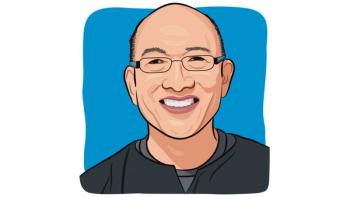
A Genetic Variant May Identify Children at Higher Risk of Chemotherapy-Induced Hearing Loss
Children with cancer who carry the specific genetic variant may be at a three times increased risk of developing cisplatin-induced hearing loss compared to those who do not.
Researchers discovered the genetic variant that may be linked to a three times increased risk of cisplatin-induced hearing loss in children with cancer.
Cisplatin is a chemotherapy-based treatment option that is effective in the treatment of children with cancer, contributing to an estimated 80% five-year survival rate, according to Dr. Amit Bhavsar, assistant professor in the department of medical microbiology and immunology and Canada research chair in functional genomic medicine at the University of Alberta, in an interview with CURE®.
“The problem (with cisplatin) is that it's just not very safe for many, many children,” said Bhavsar, who led the study published in Precision Oncology. “What we'd really like to do is to be able to keep using this drug because it is a lifesaving drug but make it safer. Make it so that kids don’t suffer these long-term toxicities that are going to affect their speech, language and learning.”
Improved Treatment Plans
Bhavsar noted that children without the variant are also at a risk of developing cisplatin-induced hearing loss, but that defining the genetic variant could help health care teams plan treatment regimens accordingly in hopes of preventing the side effect for those at an increased risk.
“When you find these genomic variants that seem to be associated with an outcome for hearing loss, what that allows you to do is rapidly test for whether the patient has that variant or not, and that might allow the treatment to be customized,” Bhavsar said. “If someone does carry the variant, maybe they can receive a lower dose of cisplatin or, at the very least, they can be more actively monitored to make sure that (doctors are) looking for that hearing loss.”
He added that health care teams would only have to take a saliva sample to test for the genetic variant.
In the study, researchers enrolled 770 children with cancer who were treated with cisplatin. In the trial, researchers examined how genetic variants were influenced by cisplatin. What they found was that the link between cisplatin and hearing loss came down to a specialized cell in the ear called hair cells.
“They are a class of cell called mechanotransducers. It's a really fancy name, but what it means is it changes movement into electrical signals. In hearing, it's all about vibrations, and these hair cells will detect that vibration and will turn it into an electrical signal that your brain can interpret,” Bhavsar explained.
He also noted that the hair cells don’t reproduce. “If they die, then you've lost that … ability to convert movement into electricity, and we think this is what cisplatin does,” Bhavsar said. “It stimulates toxic signaling within these particular cells. It turns on these signaling pathways that ultimately lead to the production of these so-called reactive oxygen species. … They're high energy molecules that tend to wreak a lot of havoc. They cause a lot of damage, and when the body sees those, it may undergo this cell death. And in these hair cells, when that happens, it's sort of inadvertent. They undergo this type of cell death, you lose those really special cells and then you've lost that ability to convert it.”
Next Steps
While the cisplatin-induced hearing loss can also occur in adults treated with the chemotherapy drug, Bhavsar said that the side effect puts children at more of a disadvantage when it comes to speech and their developmental skills — emphasizing the importance of finding a method of prevention.
Of note, there are studies looking into a co-therapeutic that would work side-by-side with cisplatin to protect the hair cells. “Prevention is really critical here,” Bhavsar emphasized. “I think one thing that we learned from this study is that we've got a new genetic signal, a new direction to look for pathways that can be important to cisplatin. What we hope is that somewhere in this new signal we’re looking in, there’ll be a therapeutic target that we can use for prevention so that we can design or develop a therapeutic against that.”
Through these trials, however, he said that it is important for researchers to find the co-therapeutic without influencing the anti-cancer effect that cisplatin has.
“It's the beginning of a long road towards trying to understand what's going to happen here if there's really bonafide markers,” Bhavsar concluded. “But the immediate output of being able to more accurately predict whether patients are at risk (of hearing loss) is a definite plus. We're really excited that we can help refine the background knowledge that the clinician needs to decide how they want to treat their patients.”
For more news on cancer updates, research and education, don’t forget to




